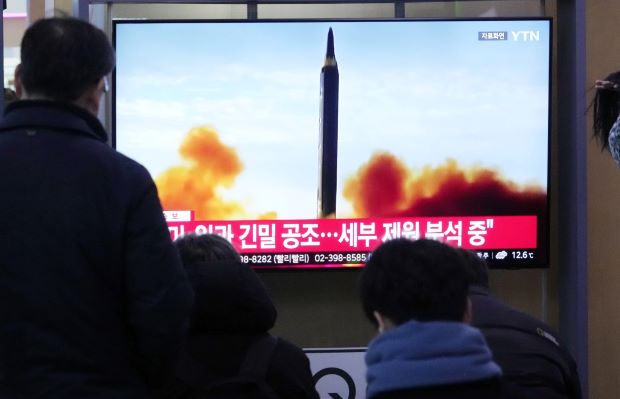North Korea test-fires intermediate-range ballistic

By Choe Sang Hun
SEOUL – North Korea launched an intermediate-range ballistic missile off its east coast Sunday (14), an indication, analysts said, that it has started testing a new and harder-to-intercept weapon capable of reaching US military bases in the Western Pacific, including those on Guam.
The missile was launched from near Pyongyang, the North Korean capital, on Sunday afternoon, but it did not fly over Japan, as some of the IRMBs North Korea has launched in the past have. Instead, it fell in waters between North Korea and Japan, covering a distance of 621 miles, South Korean military officials said.
The launch was the North’s first missile test since it fired a Hwasong-18 intercontinental ballistic missile Dec. 18.
North Korea tested the Hwasong-18, its first solid-fuel ICBM, for the first time in April 2023 and launched the same kind of missile two more times last year, a sign that the country was increasingly shifting to solid-fuel ballistic missiles. Because missiles that use solid fuel are easier to transport and faster to launch than liquid-fuel missiles, they are more dangerous.
North Korea has tested an array of solid-fuel short-range ballistic missiles since the collapse of direct diplomacy in 2019 between its leader, Kim Jong-un, and President Donald Trump.
So far, all of its intermediate-range ballistic missiles,including the Hwasong-12, rely on liquid fuel.
On Monday (15), the North’s state-run Korean Central News Agency said that the purpose of the Sunday launch was to test a solid-fuel intermediate-range ballistic missile loaded with a hypersonic warhead.
North Korea has been test-launching what it called ballistic missiles with hypersonic, manoeuvrable warheads since 2021. But after studying the flight data from such tests, including the one Sunday, officials and analysts in South Korea have expressed doubt that the missiles were truly hypersonic.
The earliest indication that North Korea was developing a solid-fuel IRBM came Nov. 15, when it said it had conducted ground tests of solid-fuel engines for such missiles.
The test Sunday was the North’s first confirmed intermediate-range ballistic missile launch since it fired a Hwasong-12 over Japan in October 2022, although some analysts have said that a failed test that the North conducted Nov. 22 may have involved the new solid-fuel missile.
North Korea triggered alarms in the region in 2017 when it twice launched a Hwasong-12 over Japan, demonstrating that it had a missile with the capacity to reach Guam. Earlier that year, it had threatened to launch four intermediate-range ballistic missiles into waters around Guam, after Trump warned of “fire and fury” against the North.
The United States and its allies have become increasingly concerned about North Korea’s frequent missile tests under Kim because the country claims to have developed nuclear warheads that it can mount on its various missiles, and it has openly threatened to use them in a war.
During a meeting of the North’s ruling Workers’ Party at the end of December, Kim called for “a vigorous struggle for carrying out the nuclear weapons production plan in 2024”.
Washington and its allies also suspect North Korea of seeking Russia’s help in developing missiles and other weapons, in return for providing artillery shells and short-range missiles for Moscow to use in its war in Ukraine. Choe Son-hui, the North’s foreign minister, began a three-day official visit to Russia on Monday amid signs of growing military cooperation between the two nations.
-New York Times


Comments are closed, but trackbacks and pingbacks are open.